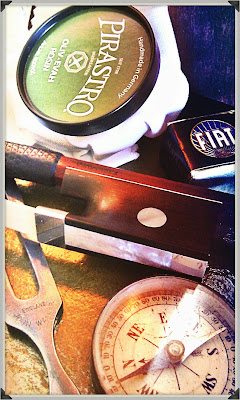Music is a temporal art, painting a spatial art. But we imagine music as occupying space – the
notes on the page, the span of a piece. ‘Where
shall we go from?’ we ask in rehearsal; not ‘when’. And our bodies move through space as they
play – we place notes, fingers lift and drop, the bow moves up and down and
from string to string. But these are not
the only kinds of place or space involved in this music. As a player, I bring together materials from
an improbable range of places. Ebony,
silver, Pau-Brasil, Alpine spruce, horse hair, rosin, maple, mother-of-pearl. And with this assemblage of matter I throw
sound into a space of stone, wood, marble, and glass, high and low notes
exploring its contours and corners and bringing back reports to the listening
ear.
And this is Bach. A
German writing in the early eighteenth century in the suite form that itself
represents a very deliberate bringing together of different points of
origin. For the suite developed as an
expression of music’s ability to ignore national borders and linguistic
boundaries, in the immediate aftermath of the religious wars that had consumed
Europe in the period after the Reformation.
The German allemande; the Franco-Italian courante (coranto); from Spain, the Sarabande (zarabanda); the minuets, bourrées, and gavottes of France; and the
British gigue. And these dances do not
only bring with them a national character, but they also come with the baggage
of the different places in society where they have lived. In most cases their story is one of lowly,
popular origins and a rise through society to success at court.
We should think more about where this kind of music was
performed, and where this particular music might have been performed. Echoing through it is the shaping hand of
closet and chamber, schoolroom and inn, hall and salon, chapel and church. This music can be intimate or grand, it can
stomp and it can skip, it can whisper and it can declaim. It carries its history, its many times and
spaces, a gathering suite or succession of moments and places, through to the particular
moment of performance, ‘Now and in England’.

No comments:
Post a Comment